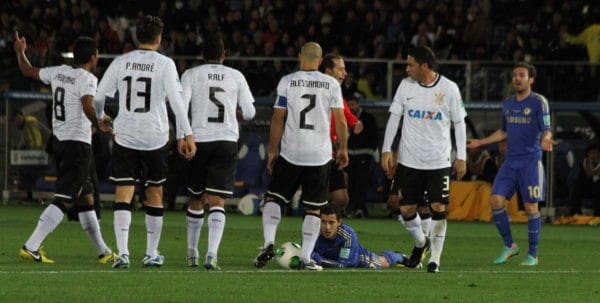
 A new report in the Journal of the American Medical Association says FIFA, the world’s soccer federation, needs to up its game when it comes to following its own concussion protocol.
A new report in the Journal of the American Medical Association says FIFA, the world’s soccer federation, needs to up its game when it comes to following its own concussion protocol.
Researchers from the Department of Neurosurgery at St. Michael’s Hospital in Toronto reviewed video footage for all 64 matches of the 2014 FIFA World Cup in Brazil and identified a total of 81 head collisions involving 61 players (a rate of 1.13 events per match). From the 81 collisions, 67 players showed two or more signs of concussion, which include being slow to get up, being disoriented or having problems with balance, unconsciousness, seizure-like movements and head clutching.
Remarkably, in only 12 cases (15 per cent of the total) were players assessed on the sidelines by health care personnel, even though the league’s regulations call for it.
“The consensus statement from the 2012 and 2016 International Conference on Concussion in Sport, adopted by FIFA, indicates that players showing any feature of concussion should be immediately withdrawn from play and assessed by sideline health care personnel,” say the report’s authors, who conclude that, “assessment and management of soccer players suspected of concussion should be improved.”
Researchers say the FIFA concussion protocol is lacking…
The researchers found that in the 67 collision events involving two or more signs of concussion, 63 per cent of the time players returned to play after receiving on-field assessment by another player or referee or health care personnel, 16 per cent of the time they were assessed at the sidelines and returned to play and five per cent of the time they were removed from the match.
FIFA drew criticism for its apparent lax attitude towards head injuries during the 2014 World Cup, where a number of players were allowed to play on despite appearing dazed and confused after a collision. Most glaring was the event involving Álvaro Pereira of Uruguay who took a knee to the head during the team’s 2-1 win over England. Pereira, who said that he felt like “the lights went out,” lay sprawled on the pitch before being taken to the sidelines, where only a minute later he returned to finish the match.
After the incident, the world players’ union called for “urgent talks and immediate assurance that FIFA can guarantee the safety of the players.” FIFA’s chief medical officer, Jiri Dvorak, responded by saying the organization takes head injuries “extremely seriously” and that its team of doctors are very experienced in assessments. “It’s very difficult to make a medical diagnosis from TV images and it could be misleading,” said Dvorak to Swissinfo.
The National Hockey League was under the spotlight for its own in-game concussion rules during this year’s Stanley Cup playoffs, as Pittsburgh Penguins star Sidney Crosby, who has a history of concussion, went head-first into the boards and lay motionless for a moment before slowly getting up and returning to play. Crosby wasn’t removed from the game, triggering the outcry from fans and pundits, alike.
The NHL protocol requires a mandatory removal of a player who shows one of four signs of concussion and has designated concussion spotters at every game to assess players’ behaviour following a collision.
Leave a Reply
You must be logged in to post a comment.




 Share
Share Tweet
Tweet Share
Share




Comment